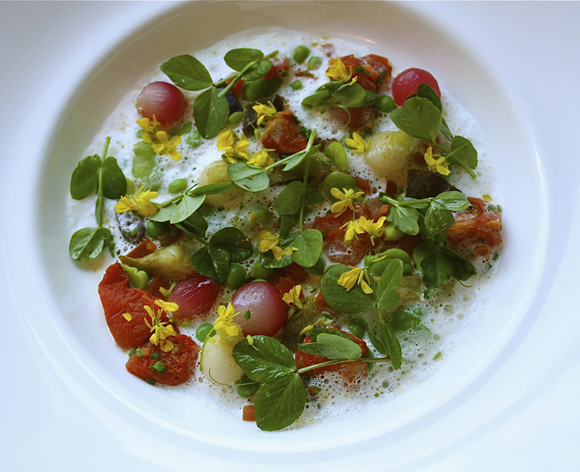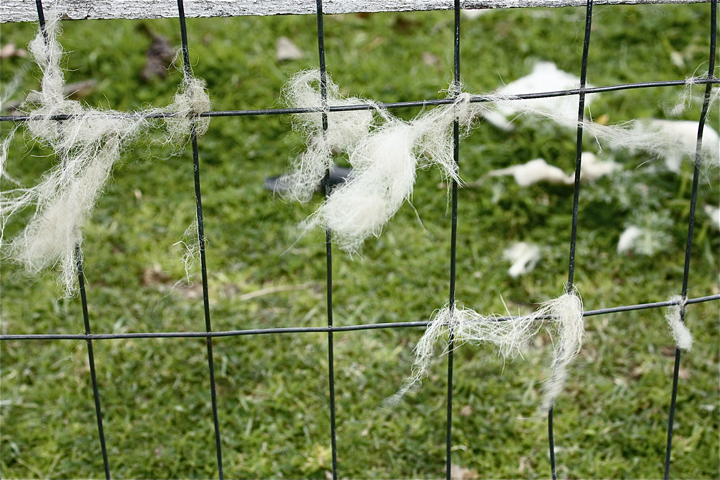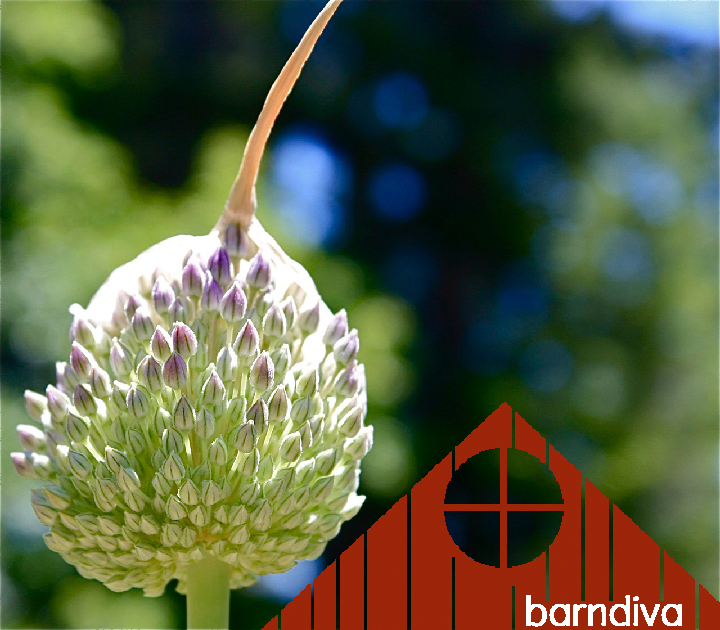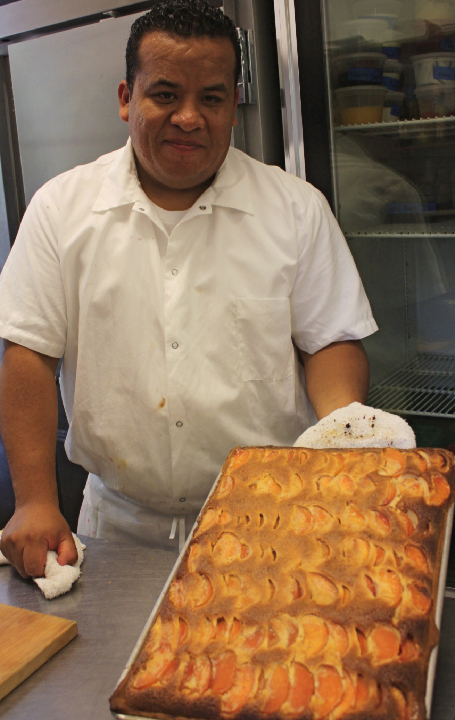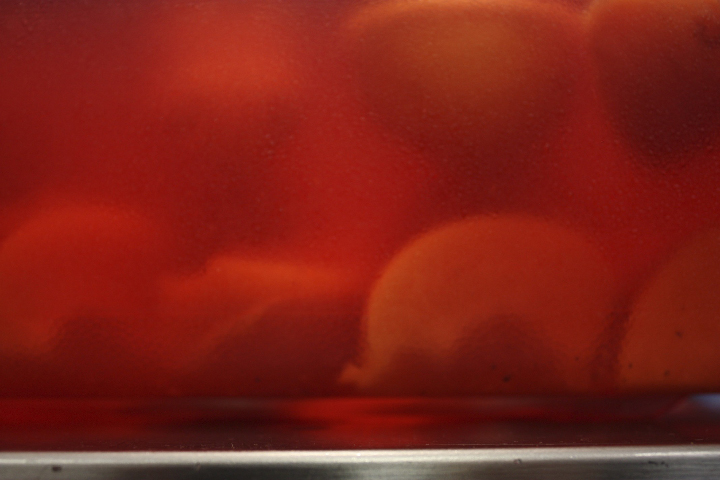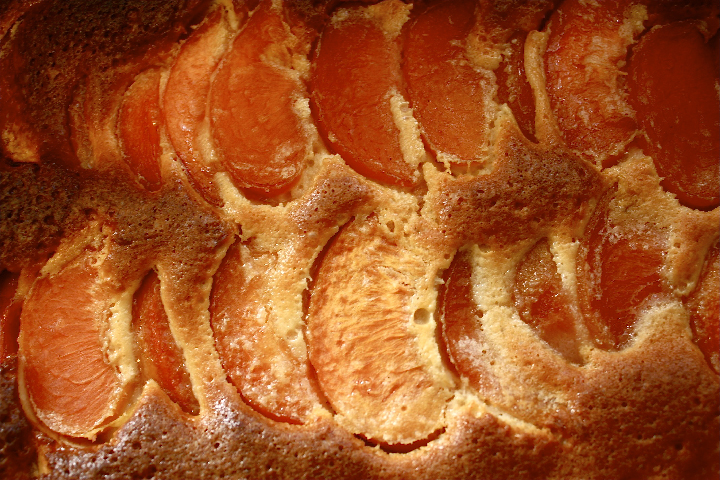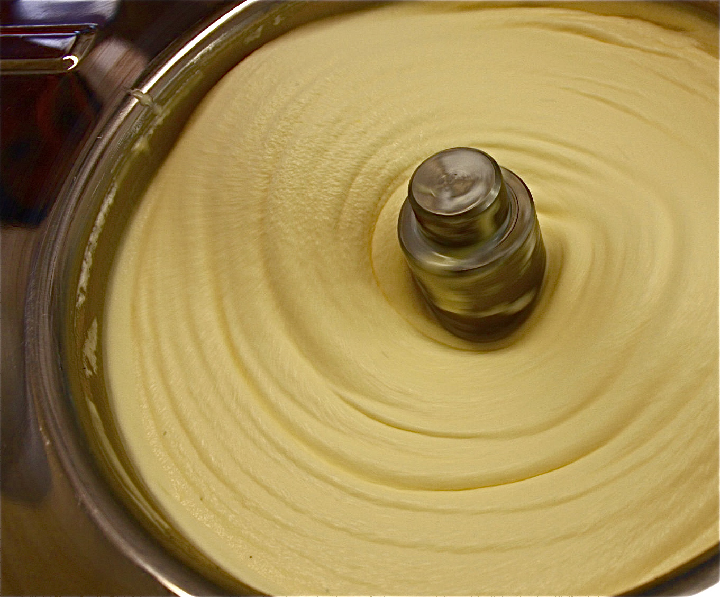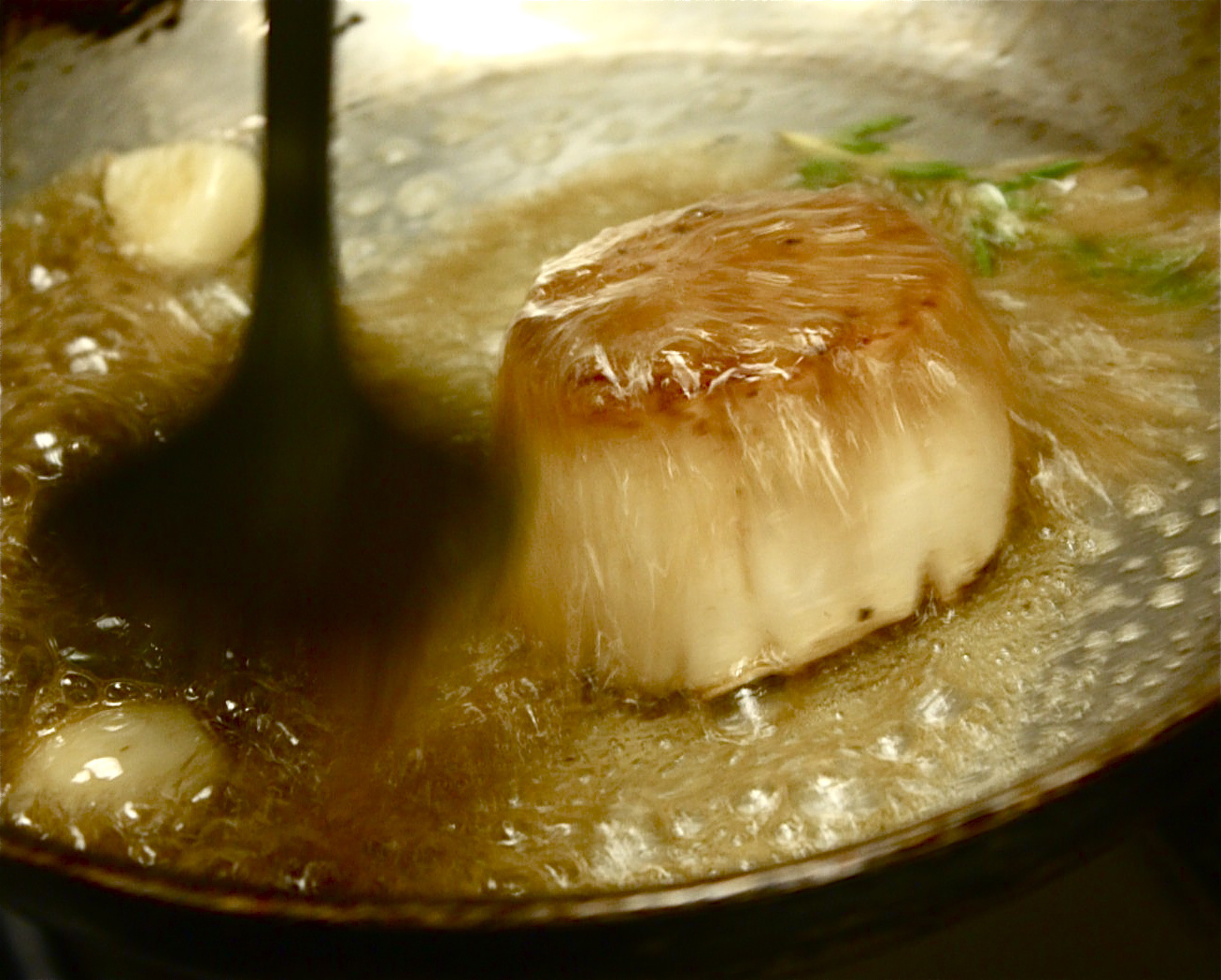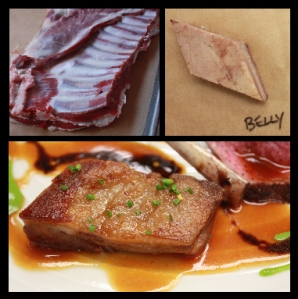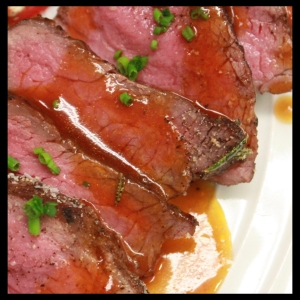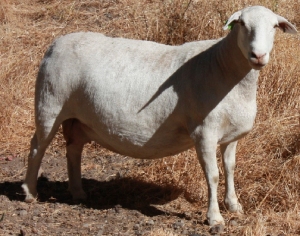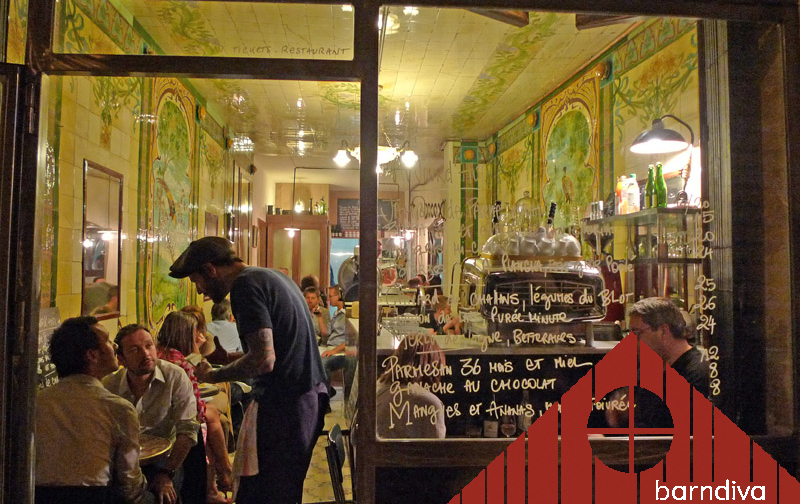
Hands Across the Ocean
 We did an inordinate amount of eating and drinking during our two week sojourn in London and Paris. Chalk some of it up to curiosity, mostly I think it stems from the desire to make a connection with other crazies in the world who are having a go cooking food as craft and art. It's a bit of an engine check, the equivalent of having a tune-up and oil change when you feel the car getting sluggish. Sometimes we reveal what we do for a living, but mostly we don’t. It’s great being able to sit back and be served and know that every little detail ~ of taste, timing, lighting, music ~ is down to someone else to worry about.
We did an inordinate amount of eating and drinking during our two week sojourn in London and Paris. Chalk some of it up to curiosity, mostly I think it stems from the desire to make a connection with other crazies in the world who are having a go cooking food as craft and art. It's a bit of an engine check, the equivalent of having a tune-up and oil change when you feel the car getting sluggish. Sometimes we reveal what we do for a living, but mostly we don’t. It’s great being able to sit back and be served and know that every little detail ~ of taste, timing, lighting, music ~ is down to someone else to worry about.

All the restaurants we'd recommend you try if you are heading over the pond any time soon are listed below. A good friend of Lukka’s and the website le fooding.com gave us a few great tips in Paris, and I have my secret weapon who can smell a new Indian, a new Nordic, or the perfect roasted chicken anywhere in London from her nest in Maida Vale. A recommendation for best Indian I read in the NY Times the day before we left (from the usually reliable Mark Bittman) was a let down, as was a touted Dim Sum ~ but in both cases the food didn’t matter as we were dining with people we don’t get to see enough of. The last time we were back in London we ate at Dinner, Heston Blumenthal’s follow up to The Fat Duck, but except in those rarest of cases (and Blumenthal is one) I try not to let my expectations lead when we go out to dine. So long as the passion is there, and the sourcing has heart, I’m game for whatever a talented chef wants to put on the plate in front of me.

I used to beat myself up about all the things we should have known when we started Barndiva, but in continually measuring what we do against the yardstick of meals we eat when we travel I’ve come to the conclusion that our early growing pains may have been one of those rare instances when ignorance really was bliss. At least to the extent that it led us to take chances which restaurants designed by committee, from the outside in, don’t have the chutzpah to take. We all have to earn a crust, but how big, how much you charge for it, and where the flour comes from are the hard decisions that can define or defeat you. As for the enormous skill set you need in order to create a great dining experience, I highly recommend you read David Chang’s I See A Darkness, in the Spring issue of Lucky Peach. His frank assessment of what it takes to be able to call yourself a “success” in this business (yes, Mom, it is first and foremost a business) inspires both pride and fear when I think how far we’ve come ~ and what it’s going to take to continue to go the distance.
So, London v. Paris. I lived in one city for over a decade and have dreamed and eaten in the other most of my adult life. Cultural differences aside, no surprise that intent is what separated the good from the forgettable. Nowhere was this more evident than in Comptoir and Hix: farm to table restaurants in the hotels we stayed at in both cities.
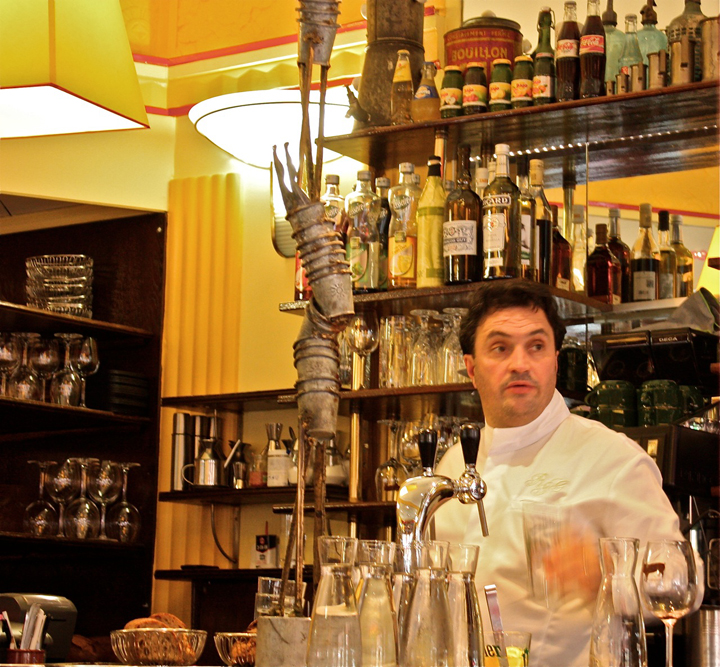
Yves Camdeborde and his wife Claudine own the hotel Relais St Germain, which is right next door to le Comptoir, their critically acclaimed restaurant where Yves still jumps on the hot line pretty much every day. His menu Gastronomic is one of the best deals in town a decade after they settled on the left bank in the 6th arrondissement in two elegant 17th Century townhouses. Even in a driving rain, a line snakes down the block to get into the 20 seat restaurant, but except for a standing room only hors d'oeuvres bar next door, he has resisted expanding. When he’s not off doing something interesting in the countryside you will find him in the hotel and the kitchen every morning as you bliss out on what’s got to be the best inclusive breakfast in Paris: huge bowls of café au lait made with La Brûlerie des Gobelins; croissants baked by Gérard Mulot; incredible yogurt from the Breton dairy Bordier. Cured Ham is cut from the bone on a big platter that sits on the bar where they also coddled eggs in some funny contraption. Even a salad of oranges that comes in a light bath of orange-flower water is simply perfect.
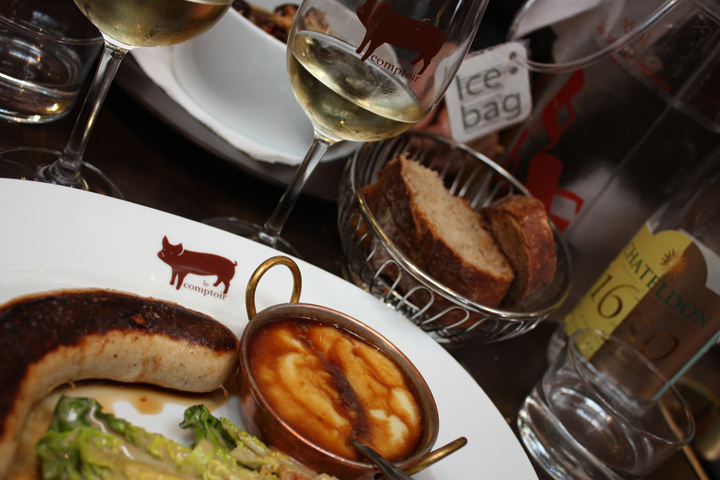
This is not a chef who grandstands: I only saw him come out to the dining room twice during service the entire week we were coming and going, once to see how a table of French Rugby players was faring (apparently his second passion), the other to greet two burly men who handed him a mysterious wooden box; whatever it was (I’m guessing truffles), he fed them an outrageous lunch for their efforts. The highlight of the Gastronomic he graciously made for us on a Saturday night (the menu is usually only served during the week) were Saint Jacques de Normandie Rôties, bouillon de crustacés, carottes variées ~ Roasted scallops in a shellfish bouillon with heirloom carrots ~ and an Oeuf de Poule Mollet, Duxelles de Champignons, Mousses au Café ~ basically a soft boiled hen egg ( but oh what an egg) over wild mushrooms in a mocha foam. Break the yolk and it floods through the mushrooms into the mocha. It tastes as if he’s spun everything you’ve ever loved about breakfast until all that’s left is its essence. The Tarte Fine aux Pomme (washed down with a perfect glass of Pineau) was the diameter of a small dinner plate, thin and crispy, with a perfectly caramelized edge. This isn’t tricky cooking, but there’s a balance that connects each beautifully sourced ingredient to the next, and all of it to the whole, that’s really remarkable.
The service at Comptoir is perfunctory, they don’t linger or explain anything, but the buzz here is unlike anywhere else we ate ~ it cuts through the pretensions this kind of food, were it served on linen with more space between tables and a less frantic atmosphere, would engender. You get Prada handbags next to backpacks next to briefcases. There is light, color, conversation in the tiny room that doesn’t stop for the food, except to eat it. Best of all there is a sense of connection to Yves' food that just makes everyone incredibly happy.
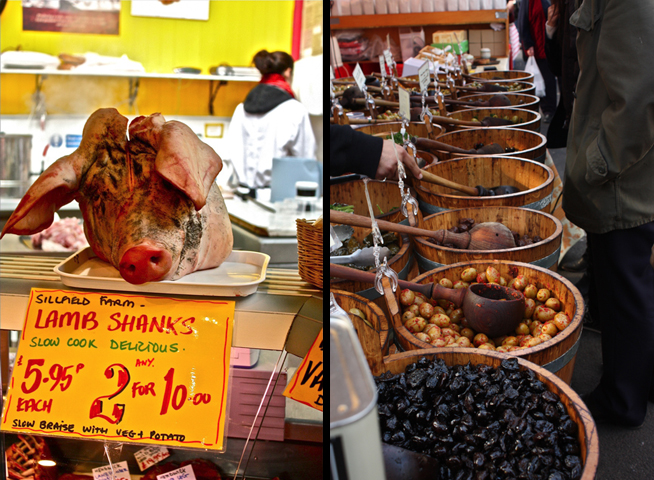
If there’s a larger moral to the truth that food is better in a restaurant where the chef is present in more than name only, it would be easy to make it by comparing our breakfast and dining experiences at Comptoir with HIX at the Belgraves, where we stayed in London. Mark Hix spent 12 years as head chef of a corporate group before he went off to earn a Michelin in Lyme Regis. Since then he’s written six cookbooks and started his own corporation opening four more restaurants and a critically acclaimed cocktail bar ~ Marks ~ working with famed mixologist Nick Dangerfield. Like Yves, Hix is known to be a fanatic about sourcing which in England these days is a joy for a diner, especially if your taste runs to things like Fillet of Hereford Beef on the bone with Bashed Neeps and Scrumpy Fried Onions, which we demolished with a bottle of wine (after a few rounds of cocktails) on our first night back from Paris. But breakfast was a pedantic and expensive affair, and a second meal with our daughter was forgettable, served in a hot, noisy room where the chairs scraped the floor like a witch’s nail against a chalkboard. The service was lousy, with a confused assortment of servers and bussers (no sommelier that I met) bouncing around like too many balls in a pinball machine. It was the end of fashion week and the hotel, renovated by the design friendly folks who built 60 Thompson in NYC, had just opened so yeah, cut them some slack. The hotel is cool. That still begs the question of who was at the helm of the restaurant.
I keep hearing that expansion is the only way to make any money in this business, but from the diner’s point of view it’s a double-edged sword. Consistency is what you need to stay on top of your game, but once you take the leap to expand, it's delegate well or die.
I did have a truly extraordinary gin cocktail at HIX made by Dangerfield consultant Stewart which featured two surprising ingredients: Tonka Beans and Ambergris. Hix’s next project is pre-made fusion cocktails. No doubt he’s got the sourcing and the science part down.

71 Mazarin is a discreet, freshest-sustainable-fish-at-the-market restaurant, with an unadorned approach to the food (marinated herring with citrus, exquisite whole steamed sea bream) that respects the waistline. On the night we dined the small clubby room had bickering fashion models, a table full of businessmen that knew their wine, and one old guy who, if I’m not mistaken, was dining with his beautiful but mysteriously ageless mistress.
The lovely wood paneled dining room at Greens has the same clubby appeal as 71, but its menu, a staple in St James’ since Simon Parker Bowles (yes, that Parker Bowles) opened it in 1982, is built for the comfort you get from perfectly battered Fish & Chips, Liver & Onions, Bangers & Mash. Basically Greens has been serving great oysters and cocktails, and ~ I say this as a compliment ~ perfect nursery food for 30 years. The chef stayed opened for us when we wandered in from shopping on Jermyn Street at five after three in need of some succor, which they expertly provided. The service was spot on. 30 years and still good? Hats off.
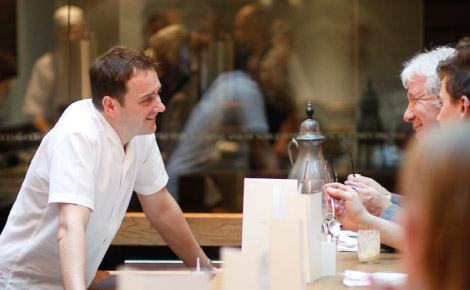
Everyone told us we were lucky to score a table at Jason Atherton's Pollen Street Social, and I may not have had the best time because we weren’t in the main room, but something didn’t jive with me and the place ~ maybe I wasn’t feeling very social. I like seeing samphire used as an herb in the crab salad; inhaled the meltingly soft beef cheek and tongue with heavily horseradished mashed potatoes; and still can’t figure out how lime granita shaved over warm panna cotta worked (but it did). At the end of the meal, talking about wine, Geoff mentioned who we were. The head waiter, who’d been sniffing down his nose at us throughout the meal, went off like a shot and looked us up online, after which service suddenly became incredibly good. That’s not the way it should work.
La Caprice is a much loved restaurant that has been serving the same dishes since they opened (and I feel like they’ve been open forever), but if you’re going for the gold in consistency, this is the way to do it. Every dish we had was delicious ~ Sweet Crispy Duck with roasted cashews, pea shoots and white bok choy threads; Cod Cheeks with marrow on toast; Baby Slip Soles pan fried in butter with tiny brown shrimp. The room is still full of its preening clientele, Mick Jagger still grinning from the wall, service still excellent. I love Caprice, Geoff and I had our first date there and it’s the restaurant my editor would take me to when I delivered a particularly good story. The rule of thumb then was that if you wanted to see who Harold Pinter wasn’t mad at you’d come here after the theatre let out instead of the Ivy (its sister restaurant). We usually eat at the bar, the better to study the incredible floral arrangements that hang, seemingly waterless, from the ceiling.
Le Grand Colbert on the other hand, is a grande dame that has not aged well. This is tourist food; paint by numbers dining with plastic flowers and indifferent waiters. I had no idea it was where the last scene in Something’s Gotta Give was shot (I defy anyone to tell me where) which may explain why the lovely guys from SF who sat next to us were there, but not why the food on the night we dined was inedible. The only upside is that I’ve crossed it off my bucket list of beautiful old zinc bar bistros and Geoff has promised never to order cockles again unless he can smell the sea or sees Terence Conran walking in the door. He was ill with food poisoning all night and into the next day.
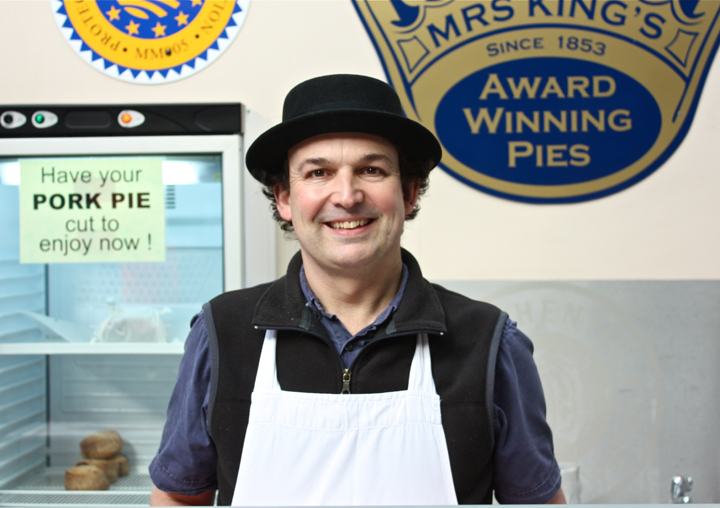
I’m not sure how we managed to eat anything at Roast, as we’d just spent two hours grazing through Borough Market and polished off a dozen oysters and a Premier Cru Chablis at Wright Brothers Oyster and Porter House Bar only an hour before. The food at Roast is sourced from the market, and if it’s not brilliant, the view down into the market is. We had delicious Beer Battered Cornish Whiting with thrice fried chips and mushy peas and anchovy rubbed Hay Baked Leg of Southdown Mutton. Geoff had Yorkshire Rhubarb Mess for dessert but I went for the Lincolnshire Poacher to see how they did their fig chutney. You gotta love a menu that has, as a description of the rib of beef, a quote from a farmer named Gwyn Davies of Lon Farm, Denbigh, in North Wales: "the Welsh Black’s reputation has been built on its capability to thrive on marginal upland areas. In Scotland cattle were often used as currency, which gave rise to the description of the Welsh Black as “the black gold from the Welsh hills.” Who knew?

I’m a sucker for restaurants that look like the Delaunay ~ call it my Ryan McNally jones. In fact, Chris Corbin and Jeremy King are (sort of) the Ryan McNally’s of London, whose Caprice Holdings also created Le Caprice, The Ivy, J. Sheekey and the Wolsley (small world: Mark Hix started his career at Caprice). The Delaunay is a carbon copy of Wolsley down to the last piece of silver plate and the polished Viennese cake table. It’s a beautiful room. These guys buy gorgeous properties, then outfit them to the nines but still serve affordable meals. Props to them. But come here for breakfast, lunch or tea; unlike Caprice, the food alone won’t captivate at dinner.
Which brings me to the two best meals we had on the trip, both cooked by young chefs that took no prisoners in their passion to present their version of cutting edge food.

The boys at Medlar, Joe Nairne (the chef) and David O’Connor (his partner and SOM) are clearly going for a Michelin, with a pared down aesthetic (better to concentrate on the food) and a passionate staff. A Medlar is a type of citrus I’d never heard of but can now tell you ~ as I ordered Foie Gras Ballotine Salad with hazelnuts and Medlar jelly as a starter ~ tastes like quince that had sex with a plum after a brief affair with a lemon. Oyster and House-smoked Mackerel Salad with Dashi Jelly and Horseradish Cream is a trickier dish than it sounds and they nailed it: fishy, creamy, salty, with just a bit heat at the finish. I had the Bream with Baby Squid with Risotto Nero and shaved fennel in a citrus jus; Geoff landed in ox tongue and heart heaven ~ it was served with a perfectly caramelized Endive Tart and Sauce Poivrade.

Medlar also had my second favorite dessert, a blood orange sorbet served with Sipsmith Gin and freshly baked Madeleine’s ~ surprising how gin at this stage of a meal can work as a palate cleanser and also (as I soon found out) put you to depthless sleep.

Back in Paris, we finally found Vivant a half hour after the Chinese taxi driver had unceremoniously dumped us a few blocks away (the 10th is unfamiliar stomping grounds for me). Jimi Hendrix was blaring from a crash and bash kitchen not much bigger than my son’s in Soho, and you can’t swing a cat in that. When I told the barman (who was also head waiter and busser) our name he said ‘cool’ and lead us to a table that, I’m not kidding, had chairs you find in schoolrooms for the under 12s. It's a sliver of a room with walls and ceiling incongruously covered in exquisite, museum worthy art nouveau tiles (previous life: exotic bird shop), Vivant is really a wine bar that serves food. But don’t be fooled ~ the jumble of mismatched furniture and the insouciant air only makes the level of foodcraft here all the more remarkable. Pierre Jancou may be a man with a cause beyond cooking (natural unfiltered wines) but his dedication to all things bio-dynamic also speaks to the heart of a limited chalkboard menu he only serves Monday through Friday. These were the most remarkable vegetables I had in Europe ~ if I had to guess he’s reducing the water he steams them in before he adds a bit of butter. We started with incredible Burrata ~ apparently it's shipped from a small coop on an island off the coast of Sicily ~ which I devoured while Geoff contemplated a plate of thinly sliced cured meat that was surprisingly smokey and aromatic given how fatty it was (my French failed me but I think it was made from the tasty bits in the neck of a bovine). We had pan fried chicken and vegetables and a molten chocolate cake to follow ~ all of it very simply prepared, all of it extremely delicious. If you aren’t familiar with unfiltered wines ~ and some of the most exciting meals in Paris continue to be found in bio-dynamic wine bars ~ you need to adjust mentally for the cloudy presentation and a bandwidth of flavor profiles that you don’t expect, and won’t get, from filtered wine even from organically grown grapes.
Where the clientele in Medlar was middle aged and well heeled, at Vivant it was a mixed younger crowd ~ even kids. Both meals were delicious but they defy comparison: Medlar is in for the long haul; they deserve a star for the finesses of every dish. Because Jancou follows his passion wherever it takes him (he's just returned to Paris from a year in the South of France) I’d be surprised if the lovely bad boys of Vivant are still there the next time I go to Paris.
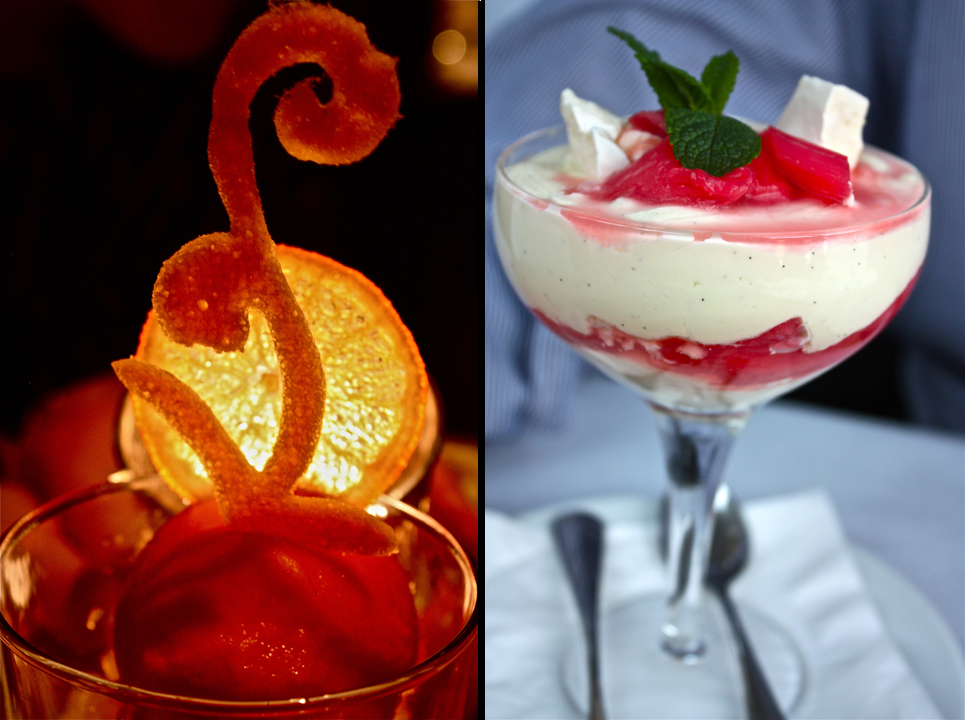
But I truly hope they are. Just when I begin to think that eating in Europe is wonderful because it fits me like a soft old leather glove you know the contours of, places like Medlar and Vivant provide a much needed jolt to the system. They put sourcing out front but in a way that’s not at all precious. We could have traveled farther than Europe to “get away” this winter, and certainly eaten more exotically, but with a few meals like these, my museum days, and an afternoon walking through the winter sun in Regent’s Park with my girls (and Charlie), I came home sated and excited for spring. Then again, for the walk alone ~ with the babies who are now having babies, living fully engaged lives that will contribute to the narrative I’ve built my own life around, I would have traveled to the moon.

Comptoir
Medlar
Vivant (for reservations, email: resavivant@gmail.com)
More Than Organic
HIX
Pollan Street Social
Borough Market
Le Fooding
Top Image of Pierre Jancou and Vivant from Paris Notebook (Phyllis Flick); images of Medlar and Pollan Street Social courtesy of their websites
All text Jil Hales. All photos Jil Hales (unless otherwise noted).
 Chef and I were working on a plan to use fava flowers or nettles for some intricate Dish of the Week when Daniel walked through the kitchen door on Friday carrying a flat of pea shoots. It was the first crop of micro greens he and Lukka have been growing as a surprise ~ Chef's been complaining that no matter how quickly he gets them from our farmers (when we can get them), micro greens are so fragile they suffer in transit. He was ecstatic.
Chef and I were working on a plan to use fava flowers or nettles for some intricate Dish of the Week when Daniel walked through the kitchen door on Friday carrying a flat of pea shoots. It was the first crop of micro greens he and Lukka have been growing as a surprise ~ Chef's been complaining that no matter how quickly he gets them from our farmers (when we can get them), micro greens are so fragile they suffer in transit. He was ecstatic.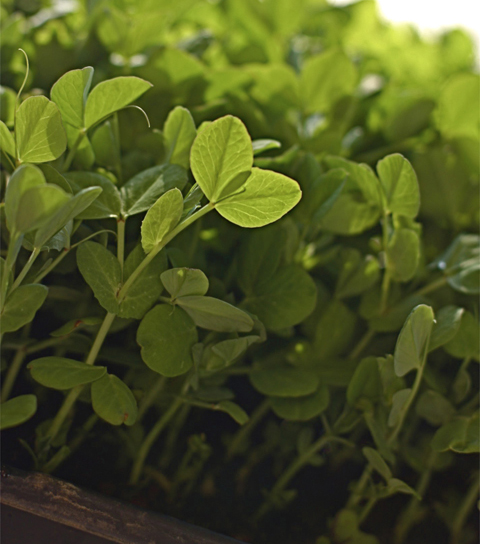 Pea shoots are packed full of carotenes ~ strong antioxidants that protect cells from damage and help prevent disease. Daniel and Lukka got their seeds ~ the variety is Dwarf Gray Sugar ~ from Johnny’s Selected Seeds. They are usually grown for quick harvest as micro greens but would produce a pea pod if given more space and left to grow. Next time you are at the Barn tool out to the patio and gardens and take a look at what’s growing; already poking out of the dirt are tiny blood red sorrel leaves. While we expect rain this week, with all the trees starting to bloom it feels like winter has come and gone, and like it or not, we are already hurling headlong into spring.
Pea shoots are packed full of carotenes ~ strong antioxidants that protect cells from damage and help prevent disease. Daniel and Lukka got their seeds ~ the variety is Dwarf Gray Sugar ~ from Johnny’s Selected Seeds. They are usually grown for quick harvest as micro greens but would produce a pea pod if given more space and left to grow. Next time you are at the Barn tool out to the patio and gardens and take a look at what’s growing; already poking out of the dirt are tiny blood red sorrel leaves. While we expect rain this week, with all the trees starting to bloom it feels like winter has come and gone, and like it or not, we are already hurling headlong into spring. I've seen my share of lovely cotton scarves and ethnic jewelry the last few years as I've gone about ethically sourcing for the Studio. Still, I couldn't help but stop when I passed the Diwale window display on Île Saint-Louis when I was in Paris. The colorways were straight off the runway and some of the jewelry, especially the colored bangles with thin gold training bands, were uncannily like... Bulgari's? Someone's got a great eye, I thought. Diwale is the brainchild of a Frenchman working in India who has been so successful he's now got about six shops in Paris.
I liked what I saw so much we've reached out to see how and where they are made ~ and if that all checks out, whether or not we can get more. But for now all we have is what I could fit in my suitcases ~ and hey, my suitcases aren't that big.
I've seen my share of lovely cotton scarves and ethnic jewelry the last few years as I've gone about ethically sourcing for the Studio. Still, I couldn't help but stop when I passed the Diwale window display on Île Saint-Louis when I was in Paris. The colorways were straight off the runway and some of the jewelry, especially the colored bangles with thin gold training bands, were uncannily like... Bulgari's? Someone's got a great eye, I thought. Diwale is the brainchild of a Frenchman working in India who has been so successful he's now got about six shops in Paris.
I liked what I saw so much we've reached out to see how and where they are made ~ and if that all checks out, whether or not we can get more. But for now all we have is what I could fit in my suitcases ~ and hey, my suitcases aren't that big. There are worst things in life than to end up at Fritschen vineyards if you are born a lamb: the food is great, the caretakers gentle and the view ain't bad either. Of course the lambs don't care that John Fritschen's vineyards sit smack dab in the middle of some of the most fertile and beautiful land in Sonoma County, but watching them grazing through the olive orchards sure makes for a pretty bucolic scene. John's lambs are Dorpers, a cross between the English Dorset and a breed from the deserts of Somalia. They were introduced in the 1940's because of a strange anomaly which makes them perfect for our warm days and cool nights. The first time I laid eyes on them I thought something weird was going on with their wool, which on the older animals seemed to be sliding right off their bodies. Turns out this is what Dorpers do, they self-shed, and it isn't wool they shed, but hair. The birds love it (wool nests anyone?) as does John, who never has to shear them in summer. We love them too, though perhaps for slightly different reasons. (If you haven't already, check out the Wed prix fixe menu.)
There are worst things in life than to end up at Fritschen vineyards if you are born a lamb: the food is great, the caretakers gentle and the view ain't bad either. Of course the lambs don't care that John Fritschen's vineyards sit smack dab in the middle of some of the most fertile and beautiful land in Sonoma County, but watching them grazing through the olive orchards sure makes for a pretty bucolic scene. John's lambs are Dorpers, a cross between the English Dorset and a breed from the deserts of Somalia. They were introduced in the 1940's because of a strange anomaly which makes them perfect for our warm days and cool nights. The first time I laid eyes on them I thought something weird was going on with their wool, which on the older animals seemed to be sliding right off their bodies. Turns out this is what Dorpers do, they self-shed, and it isn't wool they shed, but hair. The birds love it (wool nests anyone?) as does John, who never has to shear them in summer. We love them too, though perhaps for slightly different reasons. (If you haven't already, check out the Wed prix fixe menu.)



